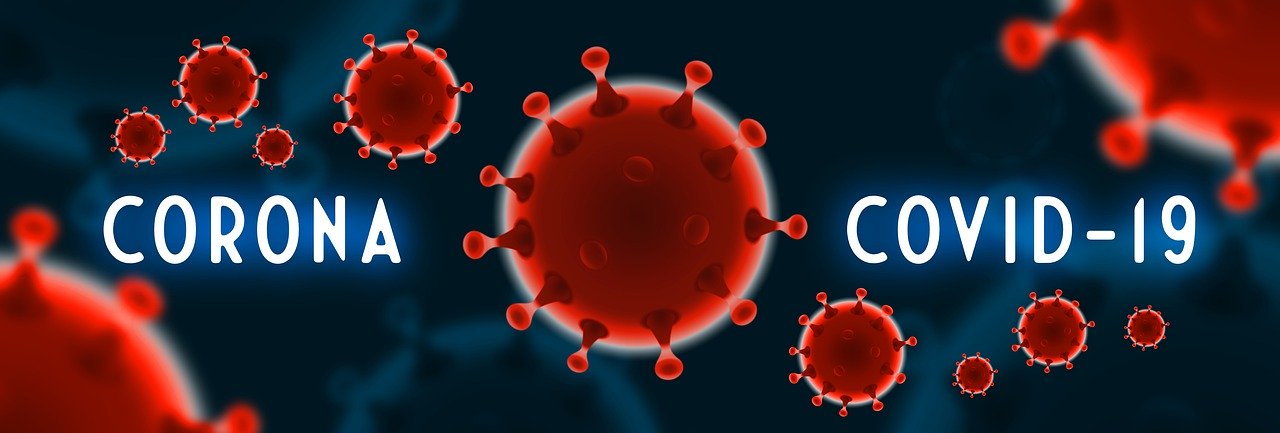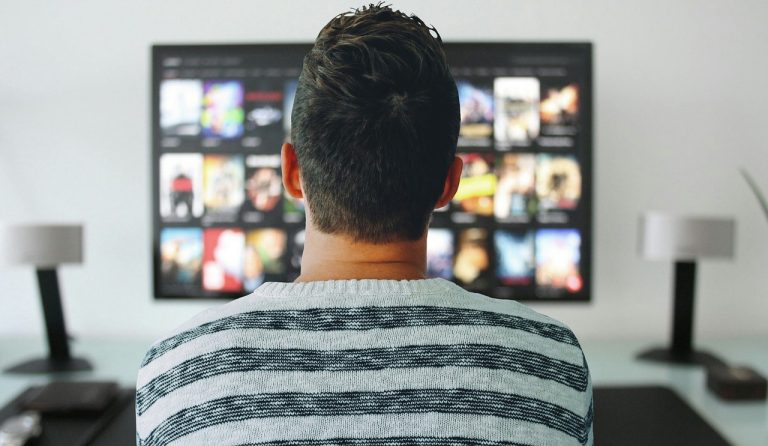All you need to know about Coronavirus (COVID-19) Pandemic & How to Cope with it

In December 2019, a pneumonia outbreak was reported in Wuhan, a city in the Hubei province of China. This new coronavirus and disease (COVID-19) were unknown before the outbreak began. The disease later spread to nearly every country in the world.
Number of Deaths recorded Worldwide due to Coronavirus:
As of 5 May 2020 around 4,302,774 people have been infected by the virus. Out of which 1,551,369 people have been recovered, and 289,562 deaths have been reported so far.
The United States, Spain, the UK, Italy, France, Brazil, Germany, Russia, Turkey, and Iran are the top 10 coronavirus-affected countries in the world.
Stats suggest that the USA, UK, and Italy have seen the highest number of deaths.
More than 80,000 fatalities have been recorded in the US alone, followed by UK (32,692), Italy (30,911), Spain (26,920), France (26,643), Brazil (11,772), Germany (7,676), Iran (6,733) and Turkey (3,841).
How did the COVID-19 outbreak start?
The source of the Coronavirus is believed to be a market in Wuhan, which sold both dead and live animals. Due to poor hygiene standards, such markets pose a heightened risk of virus transmission between animals.
Coronaviruses are common in certain species of animals. Although the transmission of Coronaviruses from animals to humans is rare, this new strain likely came from the bats. While, another study claims it has been sourced from pangolins.
A recent article published in ‘NATURE’ concluded that the virus is the product of natural evolution, ending any speculation about deliberate genetic engineering.
The study concluded that the virus evolved to its current pathogenic state through natural selection in a non- human host, and then jumped to humans. However, it remains unclear exactly how the virus first spread to humans.
Know about Coronavirus Pandemic:
The coronaviruses are a group of related viruses that cause diseases in mammals and birds.
According to the Center for Disease Control and Prevention (CDC), several Coronaviruses are known to cause respiratory infections, ranging from the common cold to more severe diseases such as— Severe Acute Respiratory Syndrome (SARS) in 2003, and the Middle East Respiratory Syndrome (MERS) in 2012.
Shortly after the epidemic began in December 2019, Chinese scientists sequenced the genome of the virus and made the data available to researchers worldwide.
On 31 December 2019, the outbreak was traced to a novel strain of Coronavirus. The disease was given the interim name COVID-19 by the World Health Organization (WHO), later renamed to SARS-CoV-2 by the International Committee on Taxonomy of Viruses (ICTV).
What are the symptoms of COVID-19?
The most prominent symptoms of COVID-19 are runny nose, sore throat, tiredness, fever along with dry cough, and shortness of breath (severe cases). which may appear two to 14 days after exposure to an infected individual.
The majority of people generally experience mild symptoms similar to a cold or flu. Some people become infected but don’t develop any symptoms and don’t feel unwell.
Older people, and those with underlying medical problems like high blood pressure, heart problems or diabetes, are more likely to develop serious illness.
CDC’s take on Coronavirus ( COVID-19):
The CDC concludes that COVID-19 poses no immediate health risk for most healthy individuals. So far, around 20 percent of COVID-19 cases have been classed as “severe” and death rate varies between 0.7 percent and 3.4 percent, depending on the location and, crucially, access to good hospital care.
Guidelines and Precautions to Fight against Coronavirus:
The mode of transmission of COVID-19 is by person to person, through small droplets from the nose or mouth, spread when a person with COVID-19 coughs or exhale.
These droplets land on objects and surfaces around the person. Other people then catch the disease by touching these objects or surfaces, then touching their eyes, nose or mouth.
People can also catch the disease if they breathe in droplets from COVID-19 infected persons. Tried and true personal hygiene practices can reduce the spread of the disease.
To combat Coronavirus, the Center for Disease Control and Prevention (CDC) recommends the following:
- Avoid close contact with people who are sick. It is important to stay more than 1 meter (3 feet) away from a person who is sick.
- Avoid touching your eyes, nose, and mouth frequently.
- Stay home when you are sick. If you have a fever, cough and difficulty breathing, seek medical attention.
- Cover your cough or sneeze with a tissue, then throw the tissue in the trash.
- Clean and disinfect frequently touched objects and surfaces, using a regular household cleaning spray or wipe.
- Wash your hands often with soap and water for at least 20 seconds. Especially after going to the bathroom; before eating; and after blowing your nose, coughing, or sneezing.
How Coronavirus is affecting the World:
With the increase in globalization the threat of pandemics are more than ever before. In the past four weeks, coronavirus disease (COVID-19) has dramatically expanded across the world, with a major outbreak in Italy.
As of March 24, 2020, the number of COVID-19 cases in Italy reached 63,588 with 5,835 total deaths.
Italy and India under Coronavirus Quarantine:
To limit the COVID-19 diffusion, the Italian government decided to put the whole country on lock-down. Since it is the only option left to stop transmission of such highly infectious disease.
Schools, universities, bars, cinema hall, hotels, and shopping malls, except for those selling food, essential drugs, electronics, and warehouses, are closed.

The National Health System is trying it’s best to cope with the increasing number of patients, needing ventilation support in intensive care units. People involved in healthcare are working day and night to combat the situation.
In the last few days, other European countries such as Spain, France and those in North America have adopted similar procedures. India detected it’s first case on January 30, 2020. Now India is fighting against COVID-19 by observing complete lock-down until April 14.
The Psychological impact of Quarantine on the General Public:
On February 26, the Lancet published a review by Samantha Brooks and, colleagues from King’s College in London of 24 studies on the psychological impact of such indefinite quarantine.
Most studies reported negative psychological effects on mental health, including post-traumatic stress symptoms, anxiety, confusion, and anger.
Children and adolescents in their growing year’s seem particularly vulnerable to a post-traumatic stress disorder, according to the review.
Stressors included longer quarantine duration, infection fears, inadequate supplies, inadequate information, financial loss, and stigma.
Check out: 5 Easy Ways to Burn Stress in the Comfort of your Room
How to Take care of your Mental Health in the situation of Quarantine:
Although staying informed is important. However feeding yourself with false information should be avoided at all costs.
Therefore, you need to minimize your exposure to media on the outbreak. Or the flooding of traumatic stories about the pandemic, which every news channel is covering 24×7.
Exposure to trauma filled media has been linked with an increase in vicarious traumatization and traumatic stress symptoms, which results in long term stress affecting mental health.
Why Hypochondriacs or the ‘Worried well’ are difficult to Treat:
People who are highly anxious about their health the so-called hypochondriacs or the “worried well” can be challenging to treat. As they obsessively think about their well being.
People with this sort of problem are excessively worried about their health. Even though their doctors reassure them, often repeatedly, that their health is fine.
Stay Calm, Stay Indoors and Take deep Breaths to relieve Stress:
Undeniably, this pandemic engulfs us with substantive reasons for fear. They run the gamut from illness, loss of loved ones, loss of income, death, isolation and on. Although such apprehensions are reality-based, we need not fall victim to them.
Anxiety and distress surface when our thoughts attach to fear. Avoiding such thoughts become necessary, when you are constantly bombarded with them.
What you can do to Manage your Stress:
Thoughts and feelings always works in tandem. If you succumb to your fearful thoughts, then you will feel anxious.
The most important relationship you will ever have is not with your parents, not with your children, not with your spouse or partner. The relationship that will impact your well being far more than any other is with your thoughts.
Controlling your thoughts become more important during such anxiety provoking situations.They are your constant companion. Your thoughts can be your greatest ally or your worst antagonist.
Try this Exercise to curb Stress and Anxiety in Quarantine:
If you learn to see your thought as an observer, you don’t have to become your thought. That is what I call thinking , the basis of mindfulness.
The only thing you can and should try to control in your life is your thinking. The pandemic can’t take that away from you.
Our fear of uncertainty lies at the very root of anxiety. Now, more than ever, we cannot know the future. That is how reality operates.
- Don’t allow your thoughts to wander off into the dread of the future.
- Stay in the present moment, and do what you must to be safe.
- Safe in terms of social distancing, in terms of washing your hands, and in terms of developing a healthy vigilance of mind.
When everything Fails, Do this:
When all else fails, remember the basics. Be sure to get enough sleep, eat well, and exercise. Such simple routine will boost our immunity to fight against infectious diseases.
These basic daily tasks support our brains in coping effectively with stress. It decreases depression and anxiety symptoms, improves cognitive function, and the processing of information.
How to Know whether you are Infected by Coronavirus or Not:
I’m sharing a link with you, which is designed by WHO and the Ministry of Health and Family Welfare India, it will be asking some questions related to the disease.
It is basically a general assessment of health, which could be easily done online and will help the government to track for potential patients. You can find the link below.
Here’s the COVID-19 Risk Assessment Scanner powered by Apollo 24|7:
https://covid.apollo247.com/?utm_source=linkedin&utm_medium=organic&utm_campaign=bot_scanner
Hope this helps, stay indoors, stay safe.





